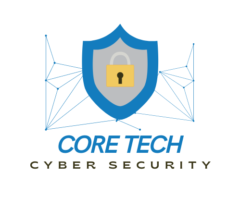Selecting the right anti-malware software is crucial for protecting your devices and data from various threats like viruses, ransomware, and spyware. With numerous options available, choosing the best anti-malware software can be overwhelming. Here’s a comprehensive guide to help you make an informed decision and select the best anti-malware software for your needs.
1. Understand Your Needs
Before choosing an anti-malware solution, assess your specific requirements. Consider the following factors:
1.1 Type of Devices
- Single Device or Multi-Device: Determine if you need protection for a single device or multiple devices (PCs, Macs, smartphones, tablets).
- Operating System: Ensure the software is compatible with your operating system (Windows, macOS, Android, iOS).
1.2 Level of Protection
- Basic vs. Comprehensive: Decide if you need basic protection or a comprehensive suite that includes additional features like firewall, VPN, and identity protection.
2. Key Features to Look For
When evaluating anti-malware software, consider the following essential features:
2.1 Real-Time Protection
- Continuous Monitoring: Look for software that offers real-time scanning and protection against threats as they occur.
- Behavioral Analysis: Choose a solution that can analyze the behavior of programs to detect and block suspicious activity.
2.2 Malware Detection and Removal
- Detection Capabilities: Ensure the software uses advanced techniques such as heuristic and behavioral analysis to identify new and unknown threats.
- Removal Tools: Check if the software provides effective tools for removing malware and cleaning infected files.
2.3 System Performance Impact
- Lightweight Operation: Opt for software that has minimal impact on your system’s performance to avoid slowing down your device.
- Fast Scanning: Choose a solution that offers quick scanning times without compromising security.
2.4 Automatic Updates
- Regular Updates: Ensure the software updates its malware definitions regularly to stay protected against the latest threats.
- Automatic Upgrades: Look for solutions that automatically update their software to include the latest features and security enhancements.
3. Additional Features
Consider whether you need additional features beyond basic malware protection:
3.1 Firewall Protection
- Built-In Firewall: Some anti-malware solutions include a firewall to monitor and control incoming and outgoing network traffic.
3.2 Identity Protection
- Identity Theft Protection: Features like identity theft protection, secure browsing, and credit monitoring can be valuable for safeguarding your personal information.
3.3 VPN Service
- Virtual Private Network: A VPN can enhance your privacy by encrypting your internet connection and masking your IP address.
3.4 Parental Controls
- Content Filtering: If you have children, look for software with parental controls to filter inappropriate content and monitor online activity.
4. User Experience and Support
Evaluate the user experience and support options provided by the anti-malware software:
4.1 User Interface
- Ease of Use: Choose software with an intuitive and user-friendly interface that simplifies management and navigation.
4.2 Customer Support
- Availability: Ensure the software offers reliable customer support through channels like live chat, email, and phone.
- Resources: Look for an extensive knowledge base, tutorials, and FAQs to assist with troubleshooting and usage.
5. Pricing and Licensing
Compare the pricing and licensing options to find the best value for your needs:
5.1 Cost
- Free vs. Paid: While free versions offer basic protection, paid versions often provide more comprehensive features and support.
- Subscription Plans: Evaluate subscription plans based on the number of devices and features included.
5.2 Trial Period
- Free Trial: Consider using a free trial to test the software’s performance and features before committing to a subscription.
6. Reviews and Reputation
Research and read reviews to gauge the effectiveness and reliability of the anti-malware software:
6.1 Independent Tests
- Third-Party Reviews: Look for independent reviews and test results from reputable sources like AV-TEST, AV-Comparatives, and SE Labs.
6.2 User Feedback
- Customer Reviews: Read user reviews and feedback to learn about the real-world performance and any potential issues with the software.
Conclusion: Making the Right Choice
Choosing the best anti-malware software involves evaluating your needs, understanding essential features, and considering additional capabilities. Focus on real-time protection, malware detection, and system performance impact, while also considering extra features, user experience, and support.
